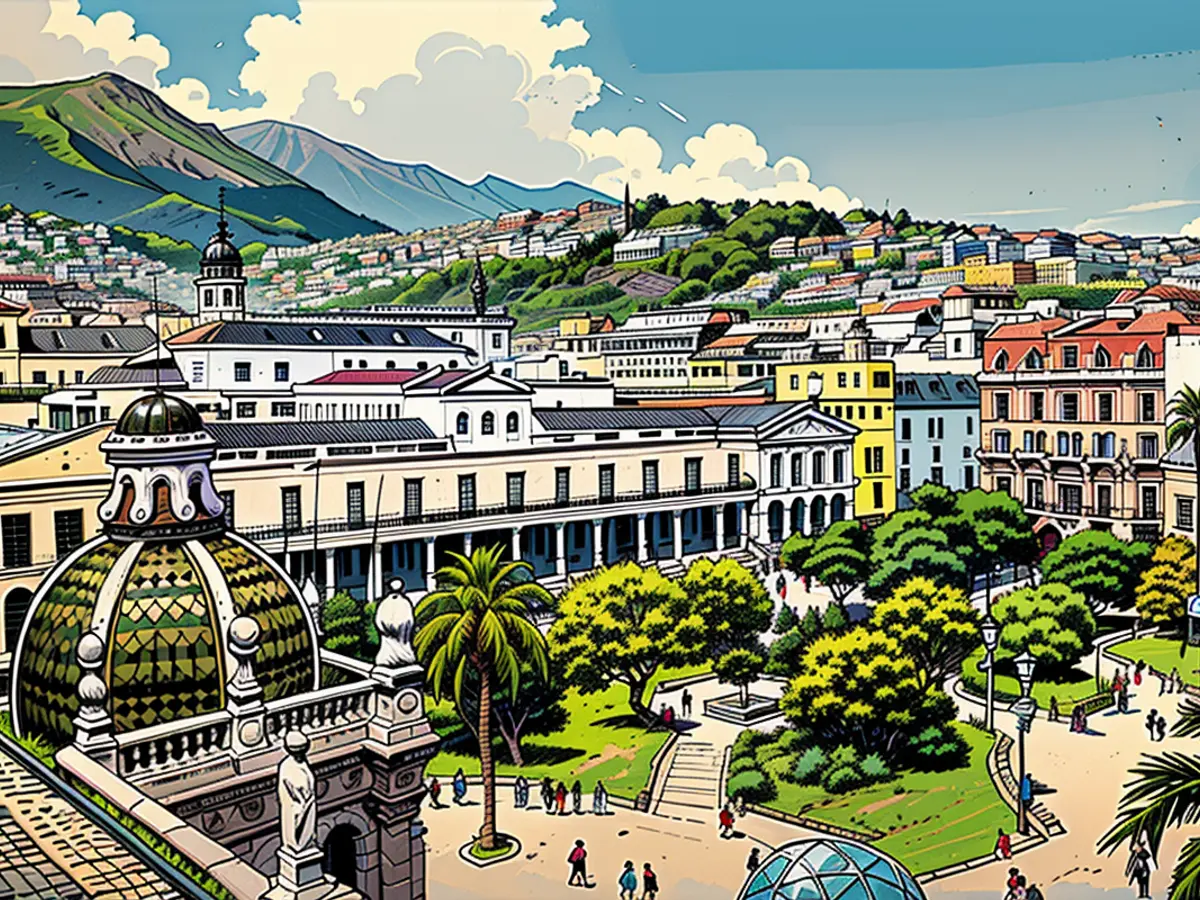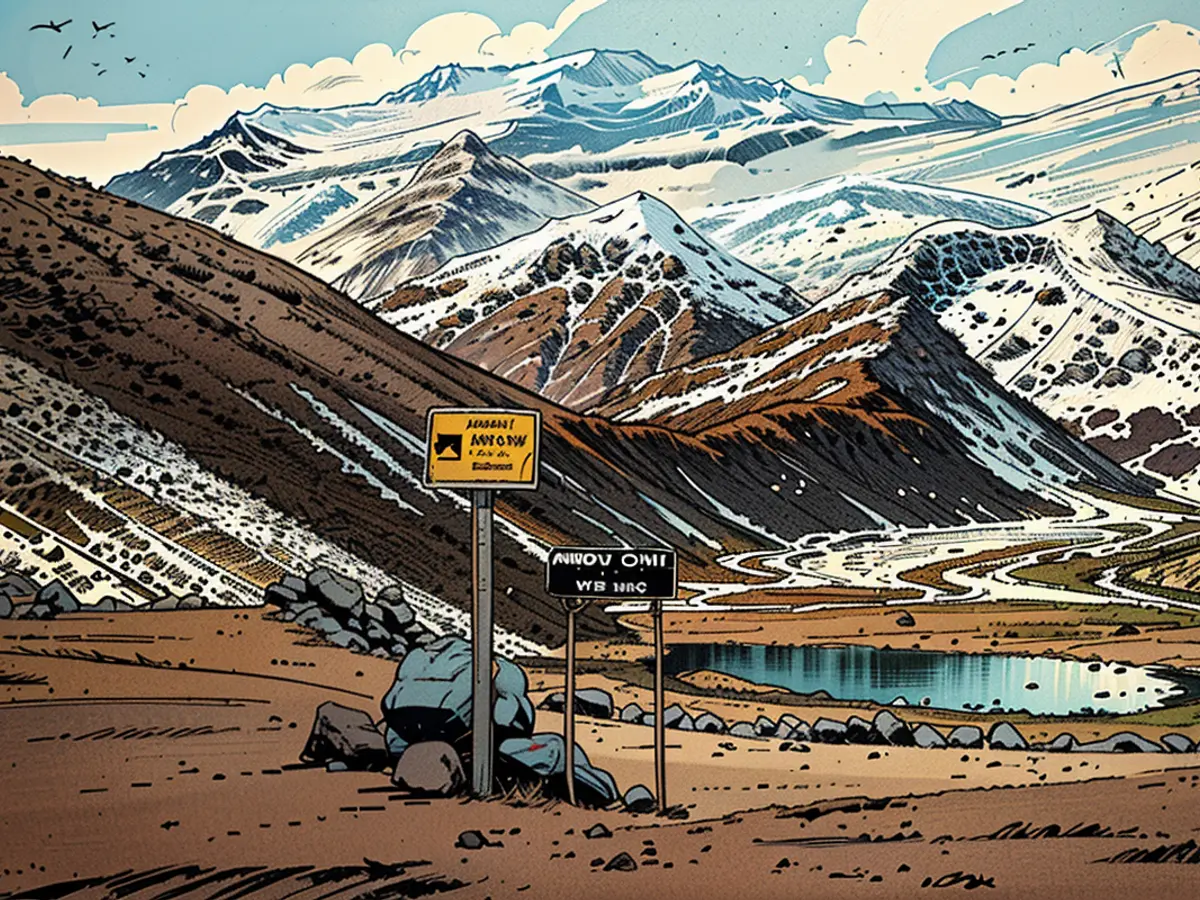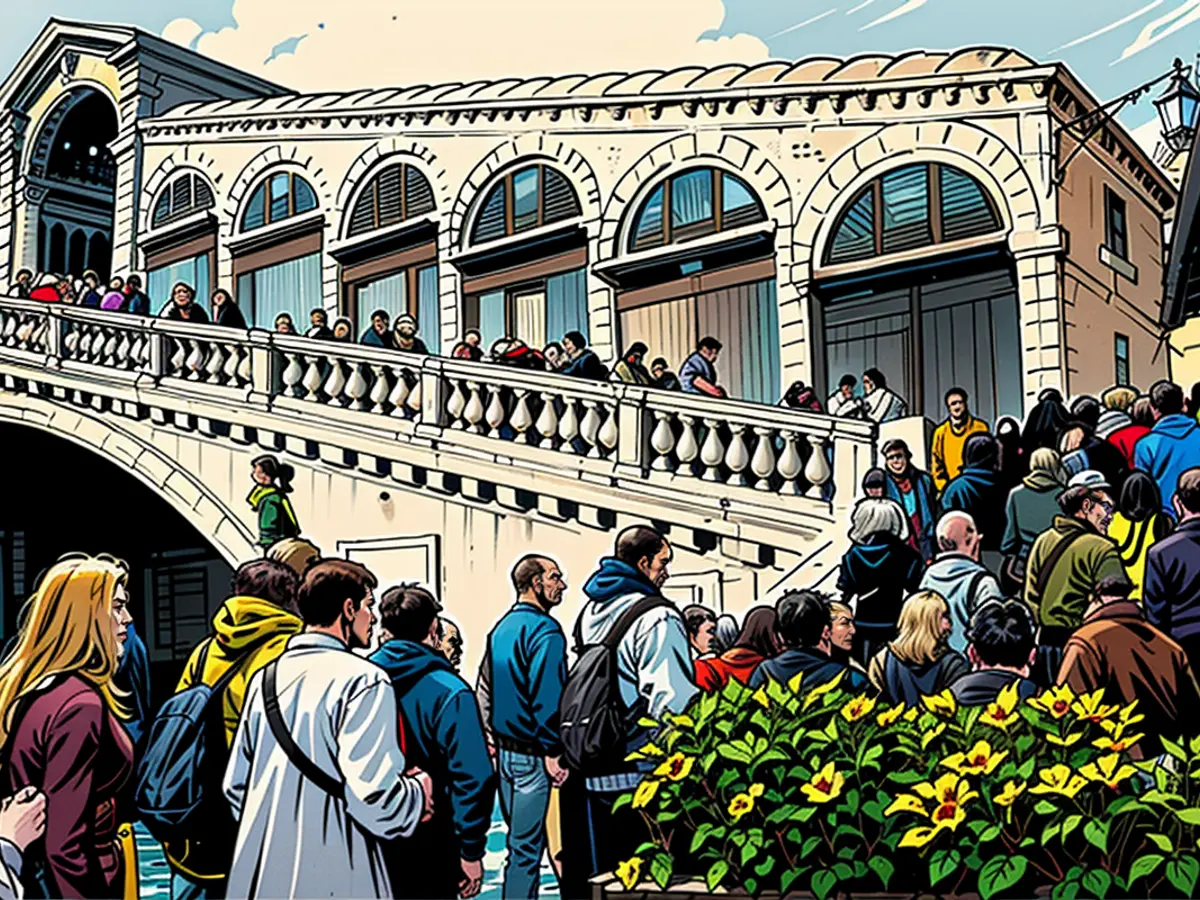Ascending the Earth's second-tallest peak without the need for local guides
If you consider altitude above mean sea level, then Mount Everest, standing at 29,032 feet (8,849 meters) and situated along the border between Tibet and Nepal, takes the title as the world's highest mountain.
However, if we measure a mountain from its base to its peak, the 33,500-foot (10,211-meter) Mauna Kea, an inactive shield volcano on the island of Hawaii, becomes the top choice.
But there's another contender for the title of highest mountain: Mount Chimborazo. Situated in the Cordillera Occidental range of the Ecuadorian Andes, this inactive stratovolcano is 8,500 feet shorter than Everest when measured from sea level, reaching only 20,548 feet (6,263 meters). However, its peak is actually 6,800 feet farther from Earth's center, making it the closest point on Earth to the stars.
Explaining this phenomenon is Derek van Westrum, a physicist with the NOAA’s National Geodetic Survey, the federal agency responsible for mapping and charting. He reflects on Earth's unique shape and position, explaining that due to its rotation, the planet bulges out at the equator. This bulge, coupled with centrifugal force, propels Chimborazo to be farther from Earth's center than taller mountains located further from the equator.
Capitalizing on this statistical quirk, Ecuador has begun promoting Chimborazo as an attractive destination for adventure travelers. The mountain's physical proximity and affordability have made it an appealing alternative to more distant and expensive peaks, such as Everest or Aconcagua in the Andes.
Ascending Chimborazo
Though Chimborazo is the thirty-ninth tallest mountain in the Andes when measured from sea level, it held brief fame as the world's highest peak during the 19th century.
This misconception stems from the influential German geographer and explorer Alexander von Humboldt, who climbed Chimborazo in 1802 but only reached about 19,300 feet before descending into the highland valley he later named the Avenue of the Volcanoes.
However, von Humboldt's accounts of the Andean giant attracted European explorers, among them British mountaineer Edward Whymper. Following celebrated first ascents of Matterhorn and Mont Blanc in the Alps, Whymper became the first person known to summit Chimborazo in 1880.
Since then, about 500 mountaineers have attempted to reach the summit annually, according to Santiago Granda, the Undersecretary of Promotion at Ecuador’s Ministry of Tourism. Unfortunately, only about half of them are successful due to various factors, including altitude, lack of preparation, and inclement weather.
The main climbing season occurs from late September to February, when the weather is milder, the mountain is blanketed with snow, and daylight remains consistent. Yet, Granda asserts that the appeal of the Ecuadorian Andes lies in its year-round accessibility.
The nation's highest mountains are temperate due to their tropical location, and there is minimal variation in daylight between seasons. The peaks are also easily accessible from highland cities such as Quito or Cuenca. Chimborazo, for example, is situated nearly equidistant from the two locations along the Pan-American Highway.
“More and more, people are coming to train and prepare for big challenges at Chimborazo,” says Granda. “You are farther away from the core of the Earth and closer to the stars than you will ever be with your feet on this planet – and that’s a big selling point.”
Adventurers hoping to summit the mountain typically undertake the journey over two days. They also require a week of acclimatization activities beforehand, says Christian Valencia, CEO of Quito-based Activexpedition, which leads mountaineering trips to the summit. Valencia recommends acclimatizing on nearby peaks such as Cayambe, Iliniza Sur, or Cotopaxi before attempting Chimborazo.

The legacy of ice merchants and Incan sacrifices
Like other Ecuadorian outfitters, Valencia offers alternative experiences to Chimborazo.
Day hikes to elevations as high as 17,000 feet (5,180 meters) are often preceded by four days of acclimatization on the nearby Quilotoa Loop. Visitors to Chimborazo can then visit the stone-built Whymper Refuge, marvel at the mirror-like Condor Cocha Lagoon, and observe the receding tropical glaciers, which serve as indicators of climate change.
Many trekkers are drawn to these glaciers to meet Baltazar Ushca, the last hielero (ice merchant) of Chimborazo. The unique role of ice merchants in Andean culture, as well as vestiges of Incan sacrifices, continues to captivate visitors to this remarkable mountain.
In the past, Indigenous men from Ecuador would sell chunks of glacier to communities further down, serving as ice merchants. This tradition ended with the introduction of refrigeration. Today, an elderly man is the sole survivor of this practice, lugging ice blocks downhill to Riobamba, where they're blended into a popular drink known as the neck-breaker.
Chimborazo, drawing tourists with its unique alpine landscape, offers a first-time snow sight for many Ecuadorians. Despite not summiting, they visit the lagoon, a popular destination.
The vicuñas, the wild ancestors of domestic alpacas, reside in Chimborazo, numbering around 8,000. Additionally, it's home to the world's largest hummingbirds, buzzing around the lush chuquiraga shrubs. Plus, queuña trees, known for their ability to thrive at high altitudes, thrive here.
Besides natural attractions, the mountain boasts a rich pre-Columbian history.
Chimborazo served as a backdrop for ritualistic sacrifices of young women and children during Incan times. These acts were believed to appease the deities, fostering a bountiful harvest. Even today, local Indigenous communities regard Tayta Chimborazo, or "Father Chimborazo," as a potent apu, or deified mountain spirit. Myths speak of his tempestuous relationship with the more active Tungurahua volcano.
Chimborazo holds great significance for all Ecuadorians, depicting it on their national coat of arms.
According to Valencia, each visit to the mountain instills a profound sense within him, despite his numerous trips.
"No matter how many times I return," he says, "the energy here always leaves me with a strong impression."
After learning about Mount Chimborazo's unique position as the point on Earth closest to the stars, adventure travelers see it as an attractive and affordable alternative to more distant peaks like Everest. With its year-round accessibility and temperate climate, Chimborazo draws visitors seeking to acclimatize and prepare for bigger challenges.
As more people are drawn to Chimborazo, they can also engage in alternative experiences offered by local outfitters, such as day hikes to high elevations, visiting the Whymper Refuge, and observing the receding glaciers which serve as indicators of climate change. These activities allow visitors to appreciate the mountain's unique alpine landscape and rich pre-Columbian history.

Read also:
- Fear of escalation in the Middle East: US Secretary of State Blinken travels to the region again
- Government circles: US Secretary of State Blinken to travel to Middle East again
- Bridging days 2024: How you can double your vacation this year
- Germany has wanderlust: how tour operators and airlines are looking ahead to the next travel year








